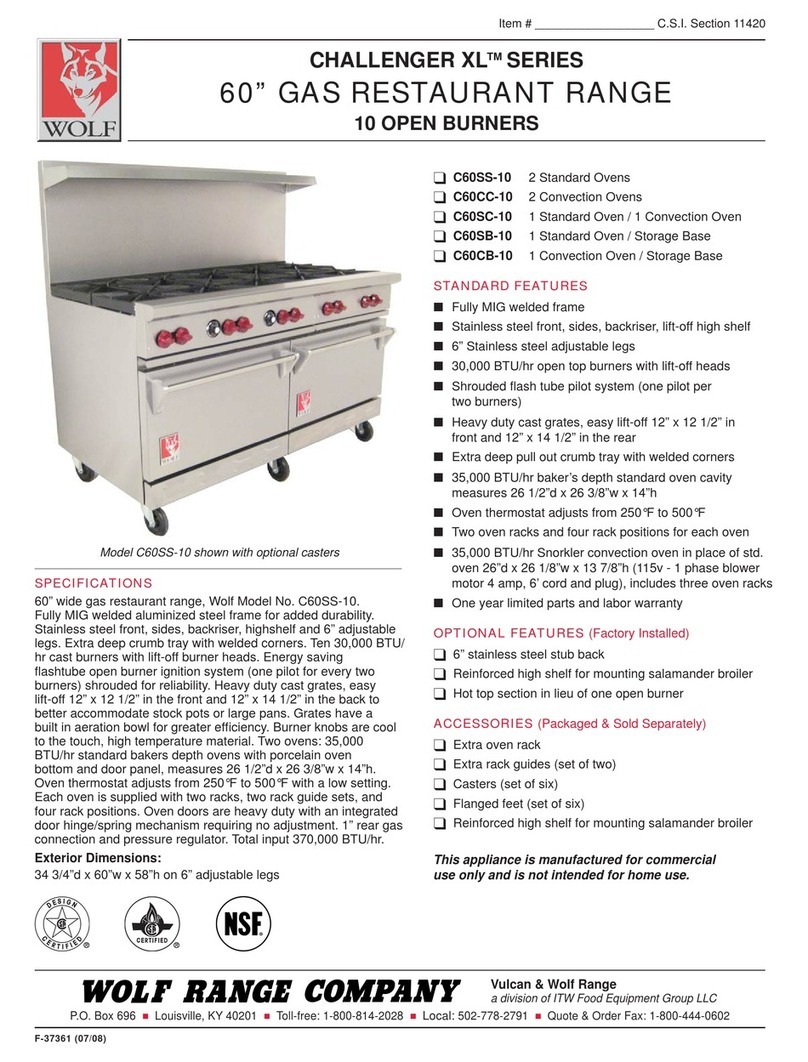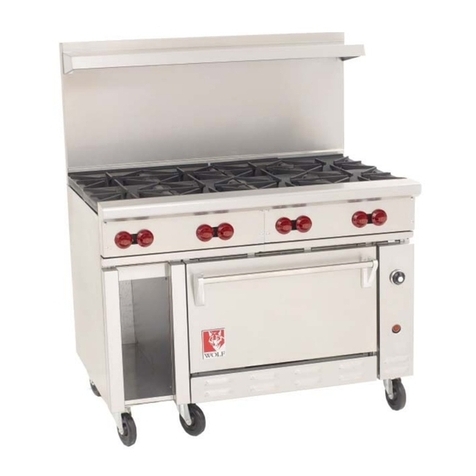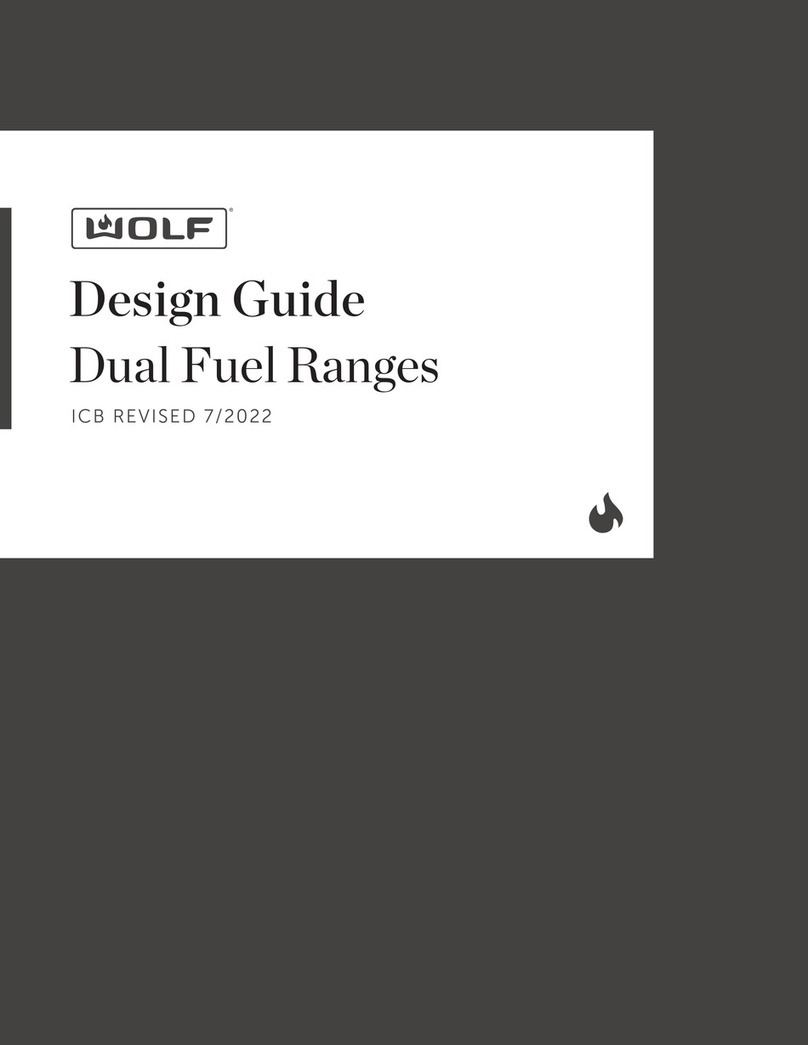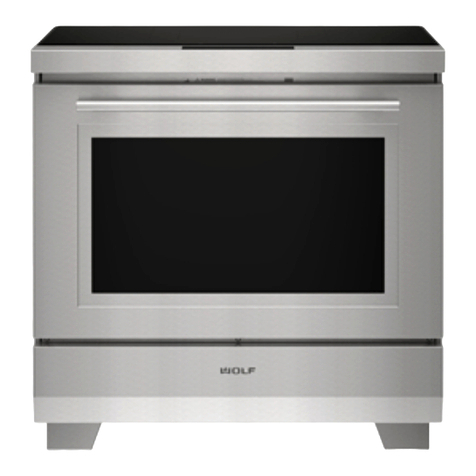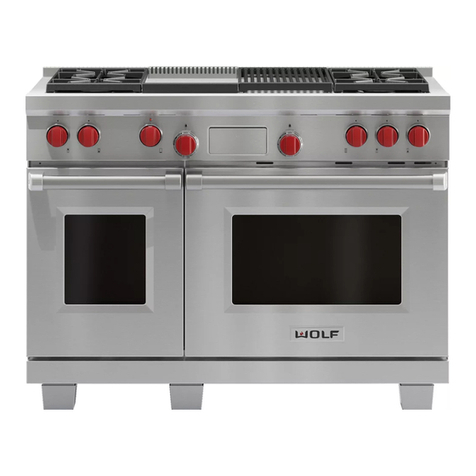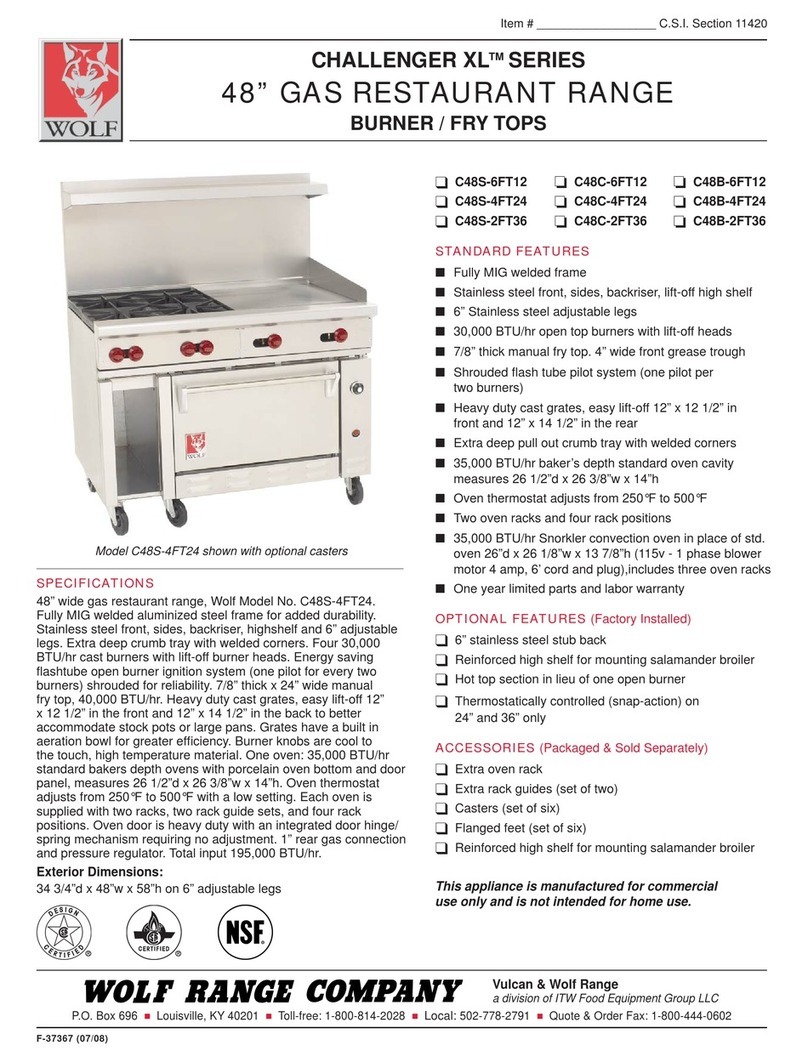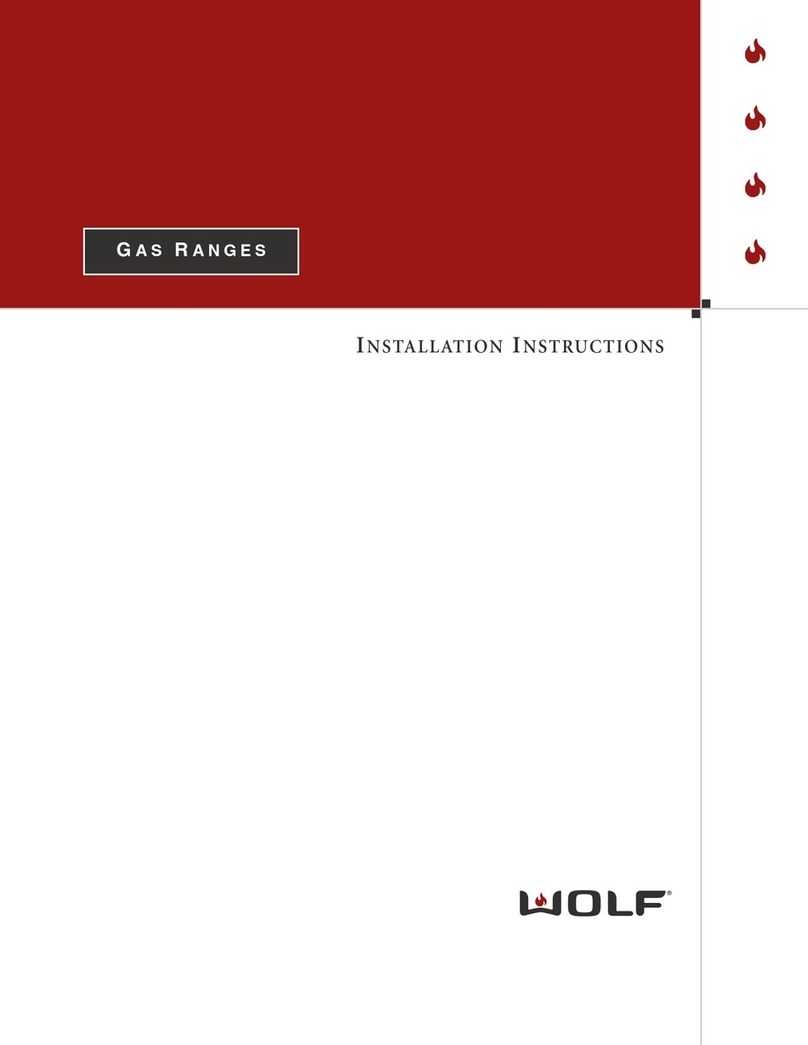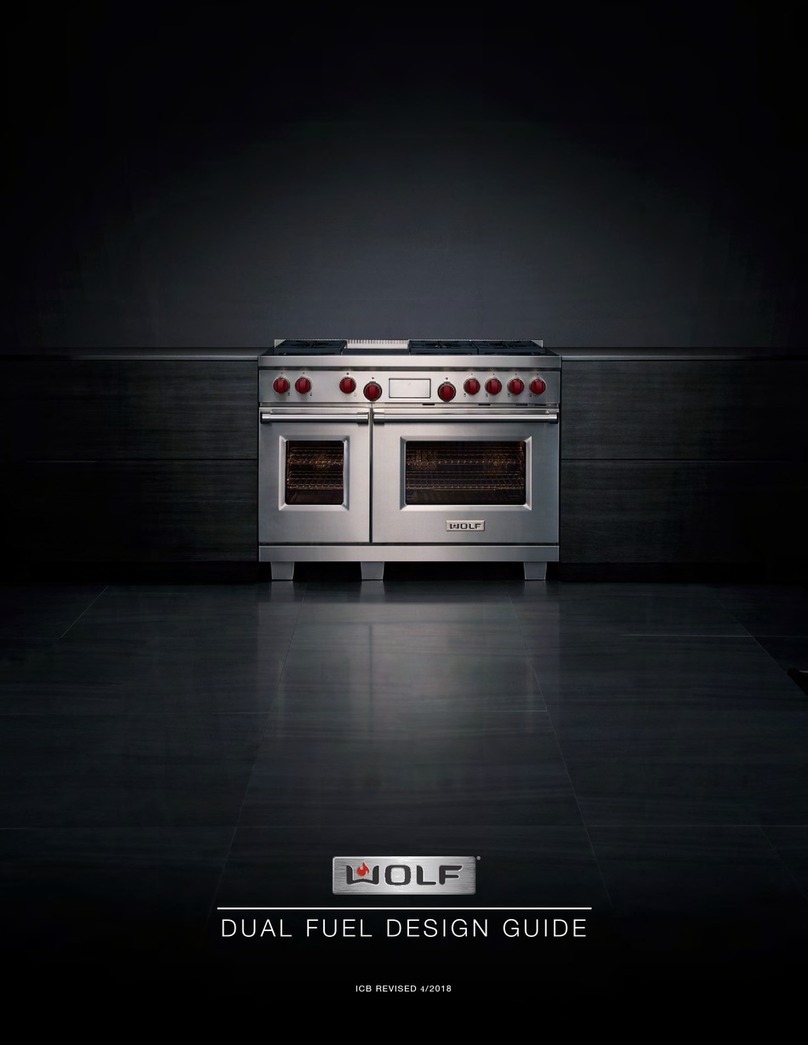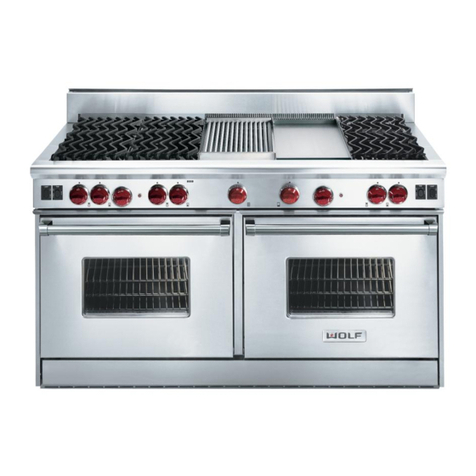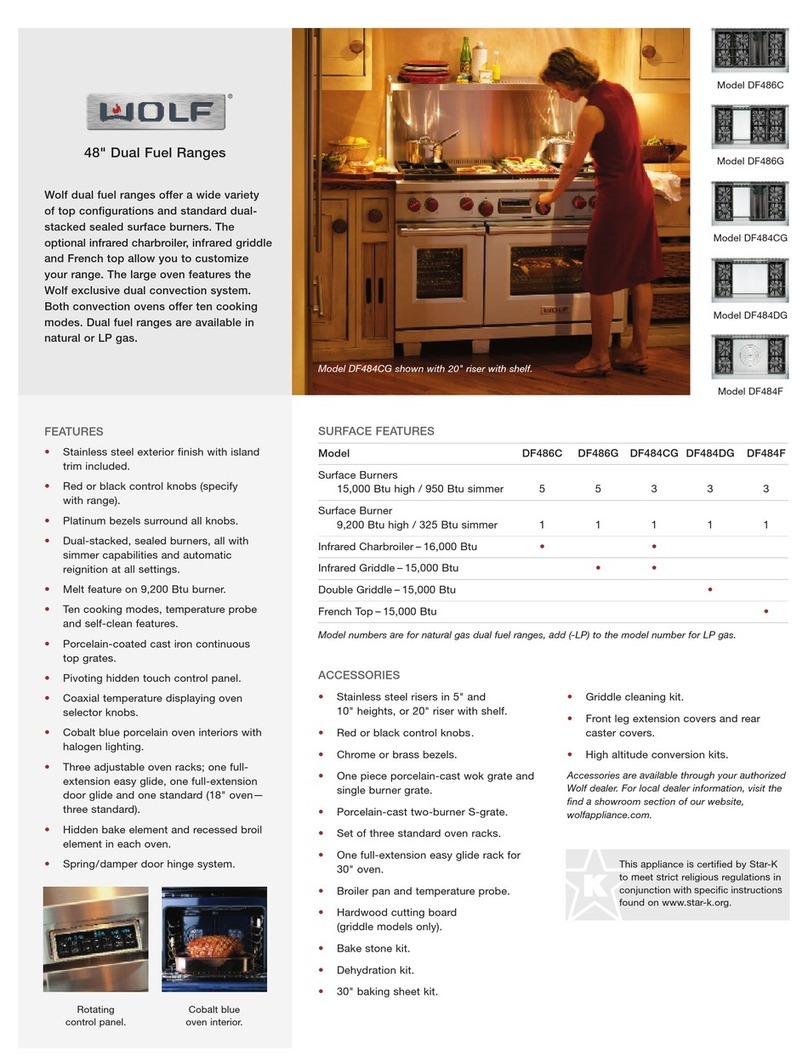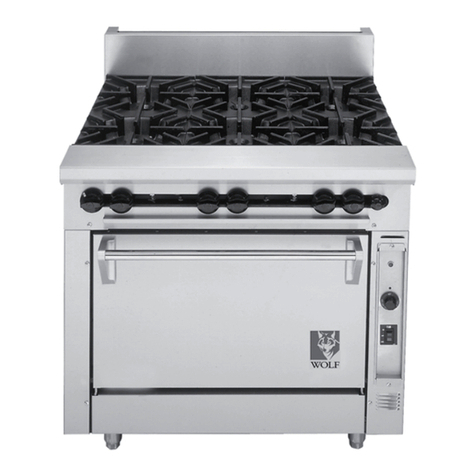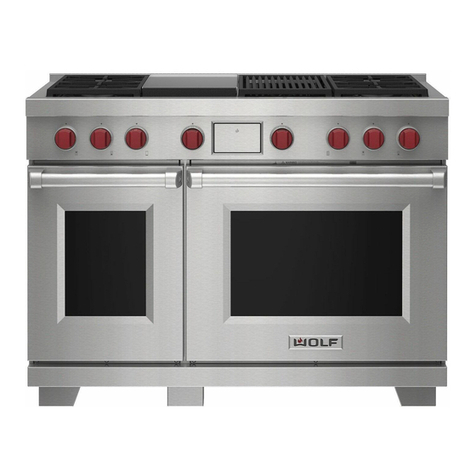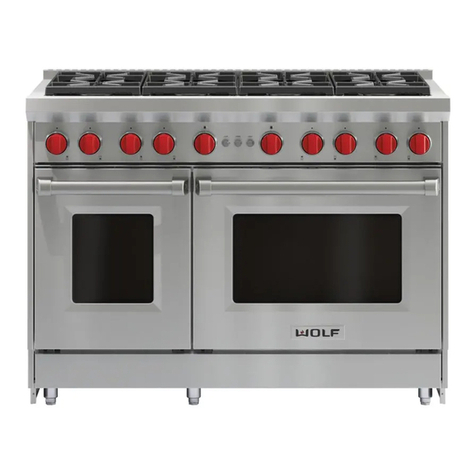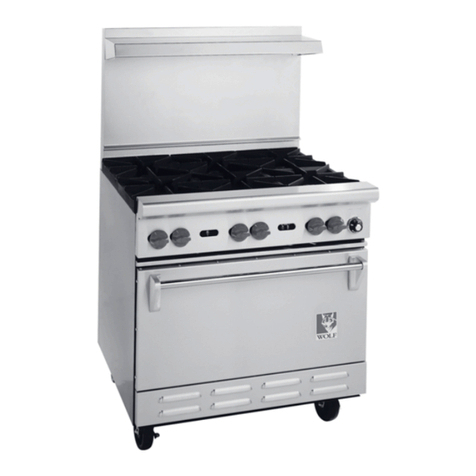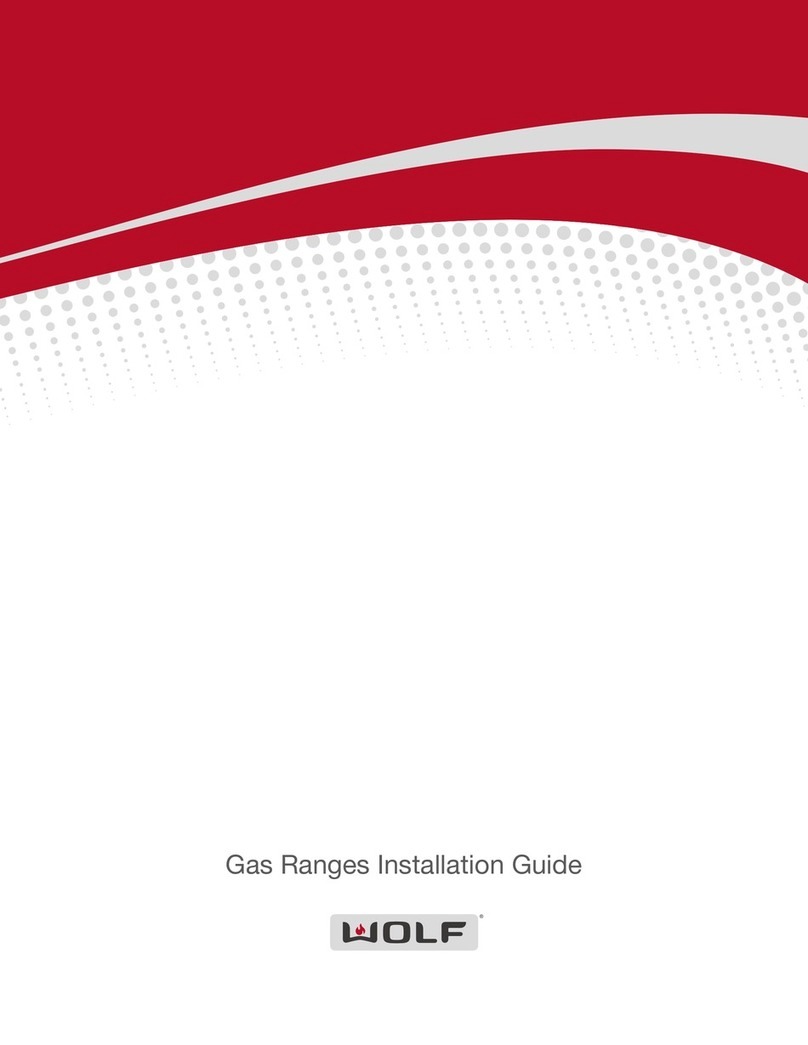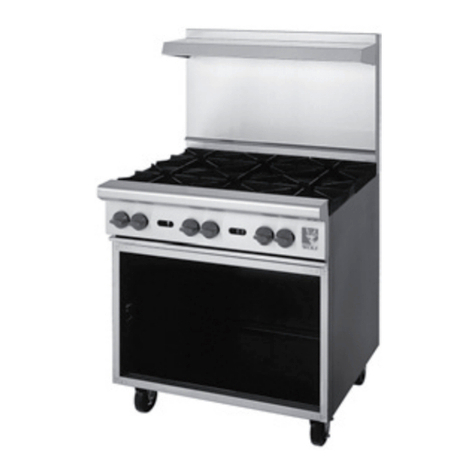
wolfappliance.com
|
5
Gas Supply
Installation must comply with local codes or, in the absence
of local codes, with the National Fuel Gas Code.
Locate the gas supply within the shaded area shown in the
illustration on the following page.
The range is equipped for use with natural or liquid propane
(LP) gas. It is design certied by the Canadian Standards
Association (CSA) for natural or LP gases. The product
rating plate has information on the type of gas that should
be used. For rating plate location, refer to the illustration
below. If this information does not agree with the type of gas
available, check with the local gas supplier The gas pres-
sure regulator is built into the unit.
GAS REQUIREMENTS
NATURAL GAS WC
Supply Pressure 5" (12.5 mb)
Min Line Pressure 7" (17.5 mb)
Max Regulator Pressure 14" (34.9 mb), .5 psi (3.5 kPa)
LP GAS WC
Supply Pressure 10" (25 mb)
Min Line Pressure 11" (27.4 mb)
Max Regulator Pressure 14" (34.9 mb), .5 psi (3.5 kPa)
SPECIFICATIONS
The range must be connected to a regulated gas supply.
The supply line must be equipped with an approved external
gas shut-off valve located near the range in an accessible
location. Do not block access to the shut-off valve. Refer to
the illustration below.
A gas supply of 3/4"(19) ID line must be provided to the
range. If local codes permit, a certied, 3' (.9 m) long, 1/2"(13)
or 3/4"(19) ID exible metal appliance connector is recom-
mended to connect the units 1/2" NPT female inlet to the
gas supply line. Pipe joint compounds, suitable for use with
natural or LP gas should be used.
The appliance and its shut-off valve must be disconnected
from the gas supply piping system during any pressure
testing of the system at test pressures in excess of .5 psi
(3.5 kPa). The appliance must be isolated from the gas
supply piping system by closing its individual manual shut-
off valve during any pressure testing of the system at test
pressures equal to or less than .5 psi (3.5 kPa).
Wolf natural gas ranges will function up to 10,250' (3124 m)
in altitude without adjustment and LP gas ranges will func-
tion up to 8,600' (2621 m). If the installation exceeds these
elevations, contact an authorized Wolf dealer for a high
altitude conversion kit.
SHUT-OFF VALVE
OPEN POSITION
GAS SUPPLYTO APPLIANCE
Gas shut-off valve
Rating plate location
RATING PLATE
